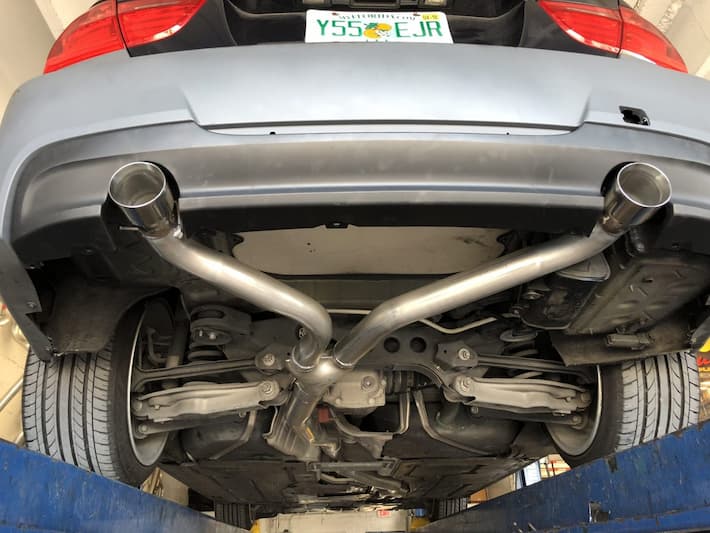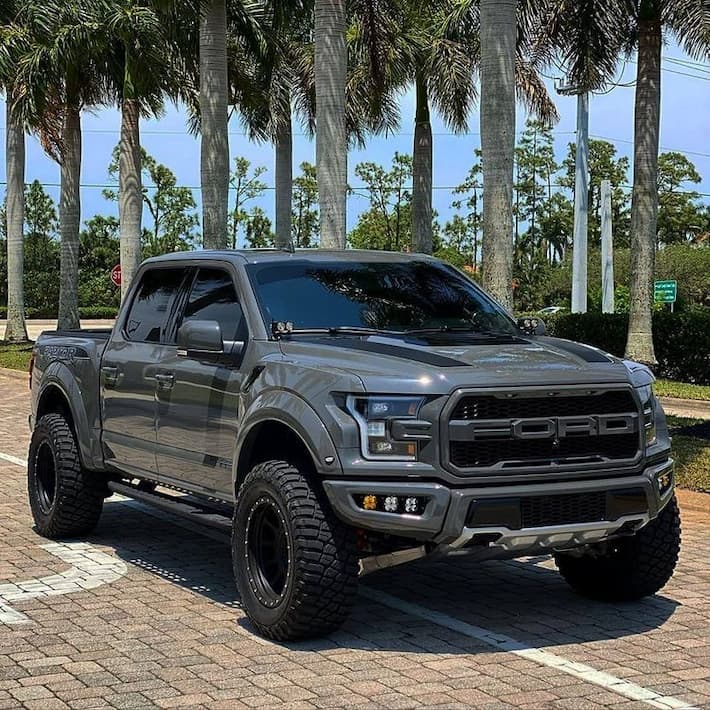Ford was one of the first car brands to kickstart the muscle car era, but it wasn’t until 2010 that the souped-up Raptor range came to dominate the performance light truck market. Starting with the fan favorite, Ford’s F-150, and the introduction of tuned and turbocharged EcoBoost engines, that the wider motoring public could enjoy fuel savings without compromising on outright performance. Featuring new internals and a bigger turbo than the regular 3.5-liter V6, the engine can propel 6000 pounds of metal to 60mph in a tick over 5 seconds.
With savings of over $30,000 over the supercharged V8 in the Raptor R models, this admittedly is more truck than most can handle, and still provides room for some serious upgrades. High on anyone’s shopping list are aftermarket exhausts for Raptor EcoBoost which open up the engine even more and let it breathe. Full systems add close to 50hp, considerably closing the gap between this and the engine with the extra cylinders, all at a fraction of the cost.
Why Stock Exhausts Aren’t the Perfect Match for Your F-150 Raptor

Even performance trucks nearing $80,000 go through cost-cutting measures to keep prices under 6 figures. Unfortunately, exhausts bear the brunt as parts not in direct view, so adequate is their best attribute. This though doesn’t do the 3.5-liter powerplant any favors, robbing it of its full potential. Does the engine have more to give? Definitely. A few tweaks and a proper exhaust befitting of a performance truck does the trick.
Stock systems save cash with mild steel, multiple bends and narrower tubing. This creates a few problems, especially when mated to a stellar engine. Inferior materials and production methods means the piping can’t cope with higher engine output (and the heat and added pressures that come with it), nor do they fare well against wet or potholed roads. Rupturing and rusting are common occurrences. Tubing snaking along the underbody also restricts free airflow, creating unwanted backpressure and essentially choking the engine. Combined, these factors dangerously hurt performance.
Reasons to Upgrade
Consider investing in a performance EcoBoost Raptor exhaust if the following fulfills your needs:
- Power and torque increases: Straighter tubing in larger diameters frees up exhaust flow, reducing restrictions like backpressure, and producing cleaner and more efficient combustion cycles. This results in power and torque gains, with full turbo-back systems with the biggest performance benefits. Related is the improved spooling for reduced turbo lag and a more responsive engine.
- Improved builds and superior materials: Ditch the crush-bent mild steel piping for the significantly higher strength and durability of mandrel-bent stainless steel. This is the entry to real performance exhausts, with higher heat and impact resistance, thicker pipe walls and a cleaner, coated or chromed exterior for a neater look. If money is no issue, also consider titanium, Inconel and carbon fiber for even more strength, significantly lower weight, and parts that will outlast the car.
- Get the exhaust sound you want: Improved airflow with higher exhaust velocity out the pipes and exhaust tips creates a louder, deeper and full-bodied exhaust note matching the power and character of the engine. The sound can be tuned with different parts, ranging from resonators, baffled or straight-pipe mufflers, catalytic deletes and more.
- Modular designs: Consider pre-assembled complete systems for balanced performance and price, or choose parts separately. Individual parts are of the modular, bolt-on type offering a leak-free and seamless fit, so you can mix and match components to meet specific needs. This also means quick and easy installation, provide parts and complete systems are supplied with the right mounting hardware.
- Lower fuel bills: While turbocharging in the F-150 has meant a huge reduction in fuel use, especially over the V8, the improved engine efficiency of aftermarket exhausts saves Raptor owners a nice amount when filling up. Drive more for less.
Choosing Parts or Completes for Your Raptor

Exhaust “completes” come in three basic types. Axle-back systems change the stock piping from the rear axle to the tips, with revised tail pipes, mufflers and tips in more appealing designs the new inclusions. Choose this system if sound is your main concern, and you’re on a tighter budget. Cat-back exhausts add straighter and wider mid-pipes from the catalytic converter to ease exhaust gases out faster, leading to improved airflow, moderate power gains and higher decibels. For outright performance with all the benefits, go with turbo-back completes. These add more efficient extractors and downpipes to draw gases out the combustion chamber (in what is called exhaust scavenging), reworked catalytic converters (high-flow or track-only cat-less systems) for improved emissions or faster airflow, and the benefits of cat-back and axle-back systems. Raptor owners can also choose X-pipe components to boost performance at higher RPMs, or H-pipes for more low-end torque, consider the engine take a dual exhaust system. Individual parts (downpipes, cats, straight-pipes, mufflers etc.) can be bought separately and installed onto the factory piping.
The main buying considerations when choosing between different exhausts for Raptor EcoBoost are pipe diameters and materials. Going half an inch wider than the stock 3″ tubes reduces backpressure, boosts exhaust velocity and helps with improved scavenging. Anything wider, however, is often counterproductive with more backpressure, and a choice only for heavily-modded Raptors with bigger turbos, high-pressure fuel injectors, cold air intake and custom-tuned trucks.
Lastly, consider established parts brands and exhaust builders with the reputation of building decently durable and high-performing systems. These utilize advanced production methods and real-world testing to meet performance targets. And high-grade stainless steel in base offerings, but move onto stronger, lighter and more durable alloys in product lines higher up the price range.



